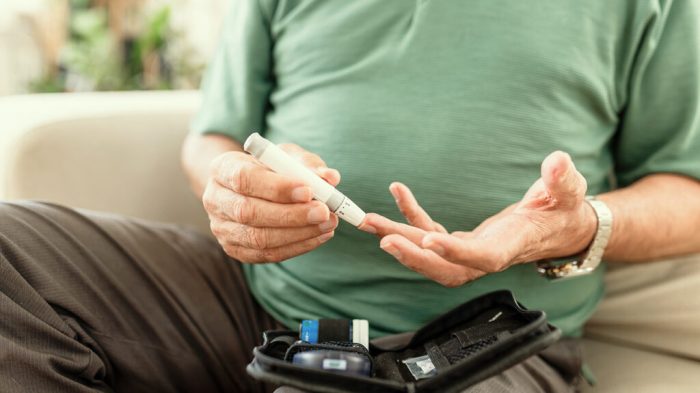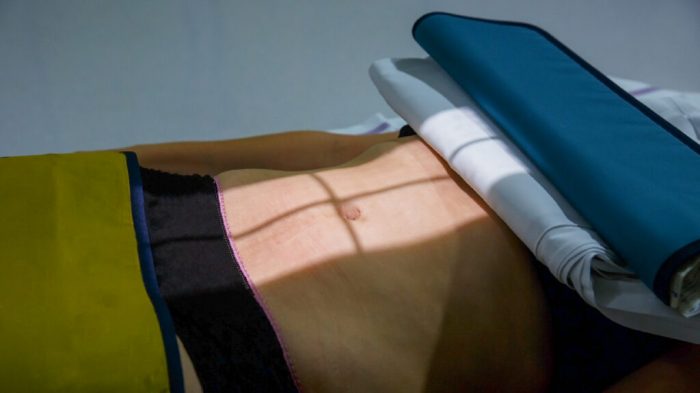In our ‘Hope behind the headlines’ series, we continue to round up the most encouraging results in COVID-19 research. But, as the pandemic continues to unfold with many countries embracing a second lockdown, a critical approach to these hopeful results is more necessary than ever.
In a live social media chat, Dr. Anthony Fauci announced a few days ago that the first doses of a safe coronavirus vaccine are set to become available in late December this year or early January 2021. This is, of course, if everything continues to go smoothly.
Dr. Fauci, the director of the National Institute of Allergy and Infectious Diseases (NIAID), was referring to two candidate vaccines currently underway: one in development by Moderna Therapeutics in collaboration with NIAID, and the other in development by Pfizer in partnership with BioNTech.
Since then, Pfizer announced a 90% effectiveness rate for its candidate vaccine. In this article, we track the progress of these therapeutics and offer a critical — yet hopeful — perspective.
Why mRNA vaccines are speedier
MNT recently covered what Tal Zaks, Chief Medical Officer of Moderna Therapeutics, and Prof. Uğur Şahin, co-founder and CEO of BioNTech, had to say about their candidate vaccine at the recent Wired Health:Tech event.
Both the Moderna-NIAID and Pfizer-BioNTech vaccines use mRNA — that is, they use genetic information rather than a viral base to “train” the immune system to respond to SARS-CoV-2, the new coronavirus that causes COVID-19.
The speakers explained how an mRNA-based vaccine could be made available faster and is generally superior to other types of vaccines that use a viral base.
They cited “the infrastructure required” as being “relatively small and quick.” They also mentioned that, because the starting point is genetic information rather than the virus itself, “there is a component of speed that allows you to get into the clinic and then […] scale-up manufacturing.”
However, it is worth noting that while both of these candidate mRNA vaccines for COVID-19 show promise in early-stage clinical trials, there is no data available yet to confirm that they can prevent people from developing the disease.
It is also important to note that there are no human-licensed mRNA vaccines for other diseases. If the Food and Drug Administration (FDA) approve these vaccines, it will be groundbreaking, not just in the fight against COVID-19, but for mRNA vaccines in general.
By December we should know if we have a safe, effective vaccine
Both candidate vaccines are currently in stage 3 of clinical trials, to test their efficacy in large-scale studies comprising tens of thousands of people.
Moderna expects to release its trial stage results later in November. By December, we should know “whether or not we have a safe and effective vaccine,” Dr. Fauci said in the live session.
Pfizer announced the results of its late-stage clinical trials this week. In a move that boosted stock markets across the globe, the company said their candidate vaccine is 90% effective. Dr. Albert Bourla, Pfizer’s CEO, hailed the results as a “great day for humanity.”
“Today is a great day for science and humanity. The first set of results from our phase 3 COVID-19 vaccine trial provides the initial evidence of our vaccine’s ability to prevent COVID-19.” – Dr. Albert Bourla
However, it is worth noting that, at the time of publication, Pfizer have not yet released their data. It is likely their 90% effectiveness rate derives from a small number of participants. Therefore, questions remain about whether the candidate vaccine is safe and effective in older adults and vulnerable populations, who are likely to receive it first.
As soon as the data are released, MNT will cover the ins and outs of the trial and offer a critical perspective.
However, as Dr. Fauci said in his live session, if everything goes well, the first vaccine doses will become available to high-risk people and groups considered most vulnerable and most in need “by the end of December or the beginning of January.”
However, it is unlikely that life will return to normal “until the end of 2021 at least,” he continued. This is because it will take a while before a vaccine is mass-distributed, and even after it is, vaccine-induced immunity takes some time to build up on a national and then global level.
While the end of 2021 feels like a long while ahead, there are other reasons to keep our hopes up in the meantime. Here are other immunity-related scientific findings that we can add to our arsenal in the fight against the new coronavirus.
More proof of long-lasting immunity
Scientists have shown that those who have had the virus may have at least some level of lasting immunity. This is helpful not just for those who have had the infection, but also for using their plasma and possibly T cells to treat others.
For instance, researchers at the University of Arizona College of Medicine in Tucson have found that people who have had COVID-19 develop long-lasting immunity. Their study appears in the journal Immunity.
The Tucson scientists tested for SARS-CoV-2 antibodies in almost 6,000 people right after the infection and again several months later. Co-lead researcher Prof. Deepta Bhattacharya says, “We clearly see high-quality antibodies still being produced 5–7 months after SARS-CoV-2 infection.”
“Many concerns have been expressed about immunity against COVID-19 not lasting. We used this study to investigate that question and found immunity is stable for at least 5 months.” – Prof. Deepta Bhattacharya
The researcher is likely referring to a few studies that point to declining antibodies over time, such as the study conducted at Imperial College London in the United Kingdom. However, the results obtained by Prof. Bhattacharya’s team counter these findings.
Even more hopeful is the parallel that Prof. Bhattacharya draws with SARS-CoV-2’s cousin, SARS-CoV, where evidence suggests immunity could last 12–17 years.
“If SARS-CoV-2 is anything like the first one, we expect antibodies to last at least 2 years, and it would be unlikely for anything much shorter,” he says.
Over 90% of COVID-19 patients had antibodies for 5 months
Another study that appears in the journal Science also adds credence to this notion of long-lasting antibody immunity.
This large-scale analysis summed up over 30,000 people and found that most of those who had the virus and experienced mild-to-moderate disease “experience robust […] antibody responses” lasting up to 5 months.
Florian Krammer, Ph.D., from the Department of Microbiology at the Icahn School of Medicine at Mount Sinai, New York, NY, is the study’s senior author. He says:
“While some reports have come out saying antibodies to this virus go away quickly, we have found just the opposite — that more than 90% of people who were mildly or moderately ill produce an antibody response strong enough to neutralize the virus, and the response is maintained for many months.”
However, the scientists note that their study is not proof that these antibodies protect against reinfection. But, they say, it is also unlikely that they wouldn’t offer protection. More studies are needed to prove this with certainty.
“Although this cannot provide conclusive evidence that these antibody responses protect from reinfection, we believe it is very likely that they will decrease the odds ratio of reinfection, and may attenuate disease in the case of breakthrough infection.” – Florian Krammer et al.
“We believe it is imperative to swiftly perform studies to investigate and establish a correlation of protection from infection with SARS-CoV-2,” conclude Krammer and colleagues.
Antibodies from older males may be most helpful
These antibodies have the potential to protect people from severe cases of COVID-19, while some people’s antibodies may be stronger and more helpful than others.
A new study — led by Prof. Sabra Klein, of the Johns Hopkins Bloomberg School’s Department of Molecular Microbiology and Immunology in Baltimore, MD — tested the ability of antibody-rich blood plasma to inactivate the new coronavirus in cells containing the virus.
The researchers used widely available tests to determine the level of antibodies in 126 adults who had recovered from mild or moderate, lab-confirmed COVID-19. They wanted to see which donors provided the strongest antibodies.
The team found that a strong antibody response correlated with being hospitalized for the disease, being male, and being older.
“We propose that sex, age, and severity of disease should be used to guide the selection of donors for convalescent plasma transfer studies because we found that these were significant patient characteristics that not only predicted the amount of antibody but the quality of that antibody.” – Prof. Sabra Klein
T cells may succeed if antibodies fail
It is worth noting that some studies question the “lifespan” of antibodies, such as the recently published Imperial College London study. But even if antibodies may decline shortly after infection — a hypothesis that is still contentious — there are other aspects of immunity that may help protect against COVID-19, for example, T cells.
A new study that used cell cultures suggests that adoptive immunotherapy — a technique where specialists take the cells that target the virus from the blood of someone who has had the virus and inject them in people with compromised immunity — could protect those with weakened immunity from severe COVID-19.
Dr. Michael Keller, a pediatric immunology specialist who led the study, comments on his team’s findings, saying, “We found that many people who recover from COVID-19 have T cells that recognize and target viral proteins of SARS-CoV-2, giving them immunity from the virus because those T cells are primed to fight it.”
“This suggests that adoptive immunotherapy using convalescent T cells to target these regions of the virus may be an effective way to protect vulnerable people, especially those with compromised immune systems due to cancer therapy or transplantation.”
However, it is important to note that this study was preclinical, used cell cultures, and even in those cells, it did not directly test T cells’ ability to destroy the new coronavirus.
Instead, the researchers found that the T cells stimulated an immune response to a small segment of the new coronavirus — a part of its membrane. Namely, they released interferon, which is crucial in the response to SARS-CoV-2 infection. Most other vaccines target the virus’ spike protein, but targeting the membrane could provide a new avenue for vaccine development.
Furthermore, the number of participants used for the study was relatively small, while many of the donors only had mild COVID-19 symptoms. Finally, not every participant had a positive COVID-19 or antibody test.
In our next installment of Hope behind the headlines, we will take a closer look at the role of T cells in offering immunity, as well as tracking the progress of the Pfizer-BioNTech vaccine.










